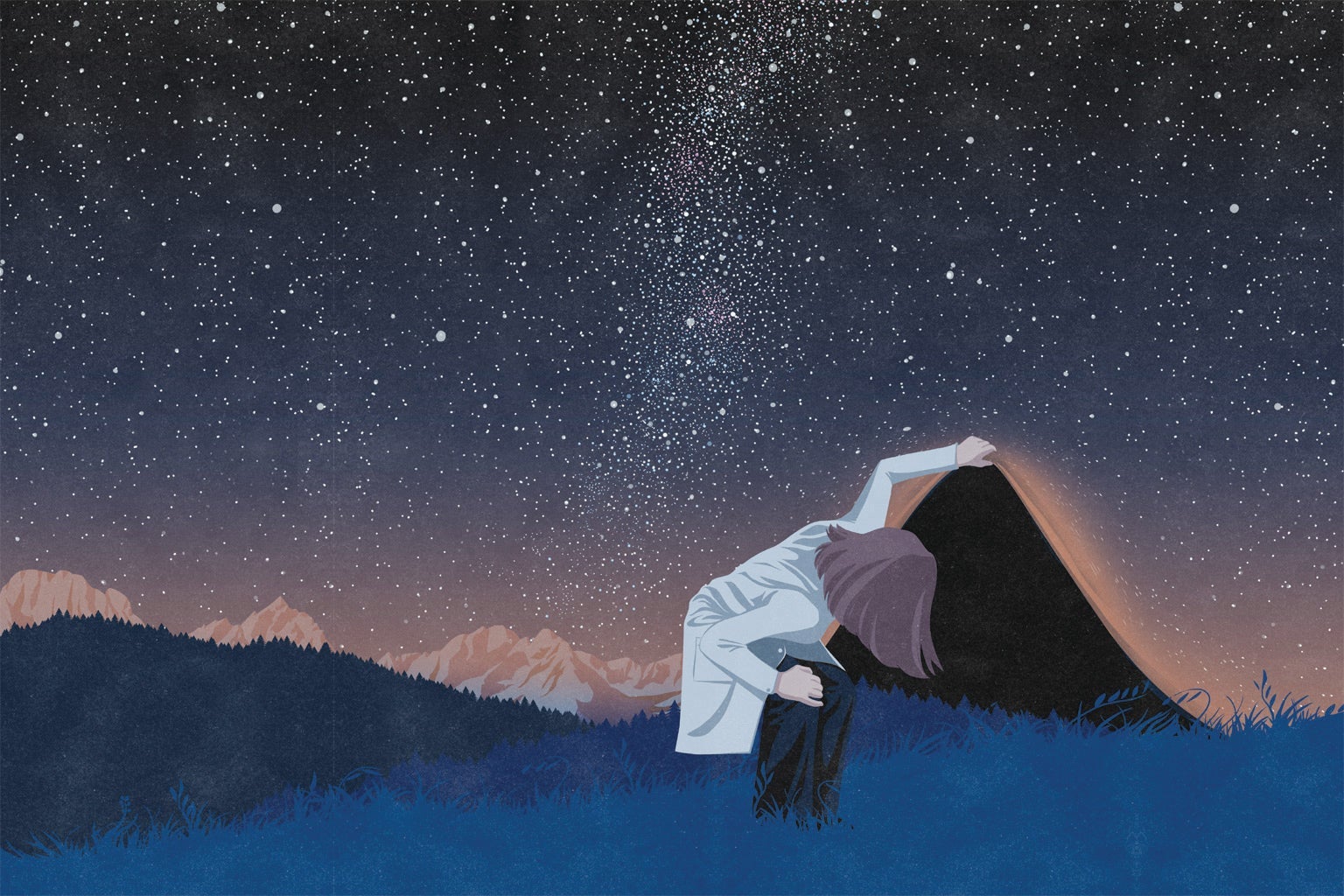
(Image credit: Alberto Gagliardi/Getty Images)
What falls into a black hole, stays in a black hole, at least according to the laws of general relativity. But now, new research suggests that the material inside the black hole may leave a quantum imprint on the gravitational field outside of it.
If true, this finding would resolve a long-standing problem in physics, Stephen Hawking’s black hole information paradox. In the 1970s, Hawking calculated that black holes might not be entirely one-way streets; they could emit thermal radiation, now known as Hawking radiation. However, this Hawking radiation is simple thermal radiation, or heat, and does not carry any information about the origin of the black hole or the matter that had disappeared inside it. In other words, measuring the radiation itself wouldn’t tell you anything about its history.
The paradox arises because the laws of quantum mechanics hold that information can’t be lost; knowing an object’s final state gives you clues to its initial state, allowing you to “rewind the movie,” said Xavier Calmet, a physicist at the University of Sussex in England who led the new research. If a black hole gobbles information irrevocably, these laws can’t be right. The contradiction makes black holes the ideal place to test how quantum mechanics and Albert Einstein’s theory of general relativity fit together.
“What we’re showing is that the two theories are much more compatible than people had envisioned, that there’s no paradox,” Calmet told Live Science.
Hairy black holes
The notion that black holes have very few features to distinguish them from one another is called the no-hair theorem, a metaphor first popularized by physicist John Wheeler. The idea is that beyond mass, charge and spin, black holes don’t have distinguishing features — no hairstyle, cut or color to tell them apart.
In their new paper, published March 17 in the journal Physical Review Letters, Calmet and his colleagues found that black holes may indeed have hair, albeit very subtle hair. The researchers work in quantum gravity, a field that seeks to understand gravitational forces through quantum mechanics. Using calculations developed over the past decade, the research team compared two theoretical stars that collapse into black holes of the same size, charge and spin, but which have a different initial chemical composition. The no-hair theorem would hold that it’s impossible to tell whether the stars that made these two black holes were initially different from one another.
But the team’s calculations showed there were differences in the gravitational field around the black hole. Specifically, information about the composition of the black hole was stored in gravitons, a hypothetical elementary particle that mediates gravitational forces in quantum gravity.
“We found that quantum gravity enables us to find the difference in the gravitational field,” Calmet said. “There’s a memory in the gravitational field of what went into the black hole.”
Resolving a paradox?
There are efforts to search for information leaking from black holes. The Laser Interferometer Gravitational-Wave Observatory (LIGO) is observing gravitational waves, which are space-time ripples created by massive objects, including black holes. In 2037, the European Space Agency plans to launch three spacecraft to detect gravitational waves from space, a mission known as the Laser Interferometer Space Antenna (LISA).
But the graviton effects suggested in the new calculations are subtle and probably wouldn’t be observable using today’s technology, Calmet said. There may eventually be simulations that can handle the subtlety. (Hawking radiation has not been directly observed in a real black hole, either, though it has been seen in simulations of black holes.)
The findings have spurred interest from the physics community, Calmet said, though he doesn’t expect the results to be accepted overnight. “Most people expected that you would have to change physics one way or another to make it work,” he said of the black hole information paradox.
Calmet and his team now hope to use their findings to further probe the possibilities of quantum gravity, which is still a field with many competing theories and no clear answer on which is correct.
“This could help us go toward a theory of quantum gravity,” Calmet said.
Originally published on Live Science.

Stephanie Pappas is a contributing writer for Live Science, covering topics ranging from geoscience to archaeology to the human brain and behavior. She was previously a senior writer for Live Science but is now a freelancer based in Denver, Colorado, and regularly contributes to Scientific American and The Monitor, the monthly magazine of the American Psychological Association. Stephanie received a bachelor’s degree in psychology from the University of South Carolina and a graduate certificate in science communication from the University of California, Santa Cruz.
Note: This article have been indexed to our site. We do not claim legitimacy, ownership or copyright of any of the content above. To see the article at original source Click Here













